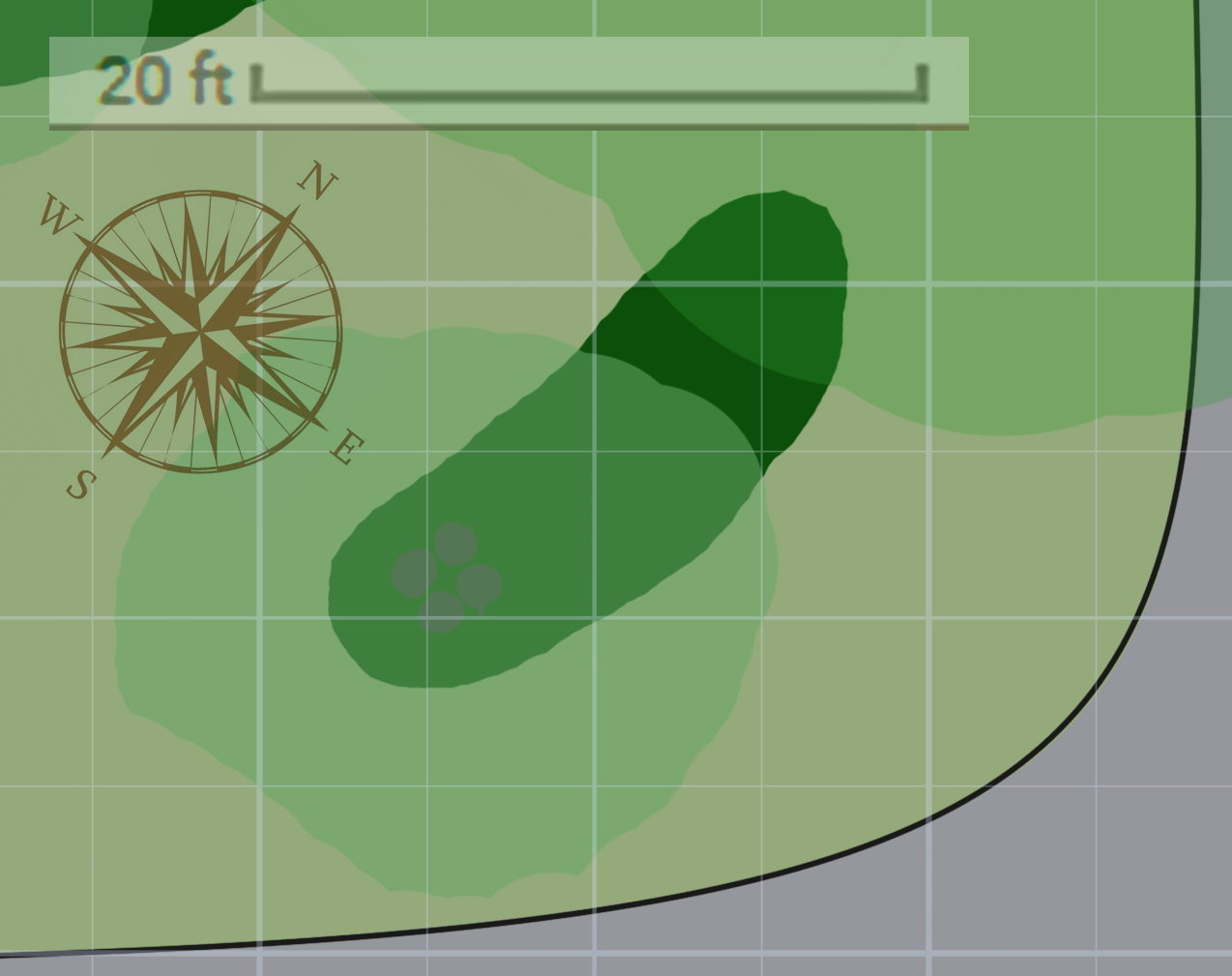This Forum will close on Wednesday 27 March, 2024. Please refer to the announcement on the Discussions page for further detail.
New Gardener, Need Design Help!
 Altheora
Posts: 2
Altheora
Posts: 2
Hi guys. Zone 7b, North Carolina, USA. I'm just getting my feet wet in this "gardening" thing. So far, I have a pretty brown thumb, but I'm trying to learn despite myself.
My first big project is a brand new garden on untouched clay soil. We have acidic soil here (5.0) and it's basically pure clay.
The first step is to create said garden: I've already scalped the area of grass and weeds, ordered a cubic yard of excellent compost, and have 3 cubic feet of peat moss. I maaay be able to get a little free expanded shale, but probably not enough to help much. I'm just working on getting someone to till the clay then till it again with the additives. Everything will be mulched with pine bark mulch. Please take a moment here to consider anything else that I should do to prepare!
Attached is my garden design plan. You'll note the lack of actual plants. I have no idea what I'm doing as far as designing goes. The tree is a brand new river birch, planted about 3 weeks ago. The area immediately around it will not be tilled, obviously. Its spread is not as big as in the image--the spread shown should be its adult size. The light green overlay in the upper right is the outside spread of a mature sugar maple that slightly overhangs the area.
I'm looking for help on plant placement. A list of plants that I'm looking at is below. I'd love some help plotting where they should go or crossing some off the list as "not for beginners." The woodland, mixed look is more my style than perfectly manicured rows of soldiers.
And thank you in advance for any assistance you can provide!
| Blue Flase Indigo | Baptisia australis | 3'-5' |
Full Sun, Partial |
| Butterflyweed for Clay | Asclepias tuberosa var. clay | 2'-4' | F,P |
| Purple Coneflower | Echinacea purpurea | 3'-4' | F |
| Black Eyed Susan | Rudbeckia hirta | 1'-3' | F,P |
| Sweet Black Eyed Susan | Rudbeckia subtometosa | 4'-6' | F,P |
| Prairie Dropseed | Sporobolus heterolepis | 2'-4' | F |
| Ruby Slippers Dwarf Oakleaf Hydrangea | Hydrangea quercifolia NA 74836 | 3'-4' | P |
| Gardenia | Gardenia jasminoides | 5-6' | F, P |
| Viburnum: Spring Bouquet Laurustinus | Viburnum tinus | 4-6' | F, P |
| Rhododendron 'Blue Diamond' | R. augustinii × 'Intrifast' | 3-4' | F |
| Caryopteris 'Longwood Blue' | Caryopteris x clandonensis | 2-4' | F |
| Dwarf Fothergilla | Fothergilla gardenii | 3-5' | F |
| Salvia; many varieties | 1-3' | F | |
| Wheeler's Dwarf Japanese Mock Orange | Pittosporum tobira | 3' | P |
| Purple Diamond® Semi-dwarf Loropetalum | Loropetalum chinense | 4-5' | F,P |

0
Posts
Hi Altheora. Congratulations on your new garden. This site is based in the UK, although we do have a few contributors in the US and elsewhere, so we are not very expert on weather conditions in these zones. However, I do know about clay soil and the key is to break it up by digging in as much compost as you can get hold of and lots of grit as well. You say it is acidic and adding peat may make it more so so you will need to bear this in mind. Composted stable and farm muck is excellent for heavy soil but I'm not sure what your shale is. If the clay is heavy and compacted dig as deep as you can, breaking up the base before you add the dug soil and compost, all mixed up as much as possible.
Many of the plants you mention are unfamiliar to me but someone better will be along soon. Good luck.
On design, start with either a view from the house that's key (sitting room or kitchen window, for example) or a place in the garden that you want to sit. Your plan doesn't show the house? Think about framing and shelter. So place the tallest of your plants where they will frame a long view, so you look between them, or enclose a seating area so you can be in the shade/out of the wind/not visible from the road, depending on what's around.
Once you have placed these 'bones', think about seasons and try to get some interest in all seasons for the views from the house. For outdoor seating areas, focus on the times of year when it will be most used.
Think in terms of groups of odd numbers of plants - a group of three or five trees and then a gap, rather than evenly spaced 'soldiers'.
Echinacea and Rudbeckia will both grow on clay soil but not in it's earliest phase - they'll need either to be in a raised bed with better drainage or (better) wait a while until the other plants are more established and the soil has improved somewhat.
“It's still magic even if you know how it's done.”
Re your plant list, I think you should go through the steps above as we're not experts in North Carolina growing conditions; however it seems to me that Caryopteris - requiring free draining soil and a sunny site - should not be in the same list as Rhododendron, preferring peaty soil and partial shade, and having a completely different character.
If the clay is wet the machine will be slip-sliding around all over the place and the weight of the machine and operator will compact the soil. You might get a nicely tilled top 8" or so of soil, but you risk having compacted clay underneath which can cause problems with waterlogging.
Adding lots and lots of organic matter is the best way to go - farmyard manure, spent mushroom compost, regular compost - whatever you can lay your hands on. 'Long' compost (ie compost which is still quite chunky with bits of uncomposted straw or twigs in) is particularly good for clay soil.
I think the best method is a bit like Raisin Girl's but does involve digging. I rough dig the whole area and then spread some organic material very thickly. Leave it a bit to get your breath back then rough dig the area again. This starts mixing the organic material in.
After you've planted up, apply a thick mulch and leave it for the worms to dig in. Mulch every year and after about 5 years you'll have good soil.
I've never bothered adding grit - my soil is too heavy and it would need far too much to do any good. However, I'm not upset when pea shingle from the drive finds it's way into the homemade compost and then onto the borders - and I always put a handful of grit into the bottom of planting holes for bulbs and plants needing free drainage.
My clay is red clay. Lots of grubs and a few worms popped up while I was getting rid of the grass and weeds (our grass is primarily weeds--it's on the to-do list later). Images of my area are below, including the house.
I'll comb through the NC State University gardening site a bit more for specifics. We have a huge rhodedendrum in the backyard and azaleas in the front (the azaleas were looking sad until I threatened then with removal, then we had no late frost this year, so they look amazing at the moment).
A couple different local gardeners suggested I wait on planting much, though they unanimously told me to till if at all possible. I didn't understand why to wait, but you guys explained that well! Thank you.
I hadn't thought of adding grit to the bottom of holes of plants needing better drainage. I'll definitely check out that option.